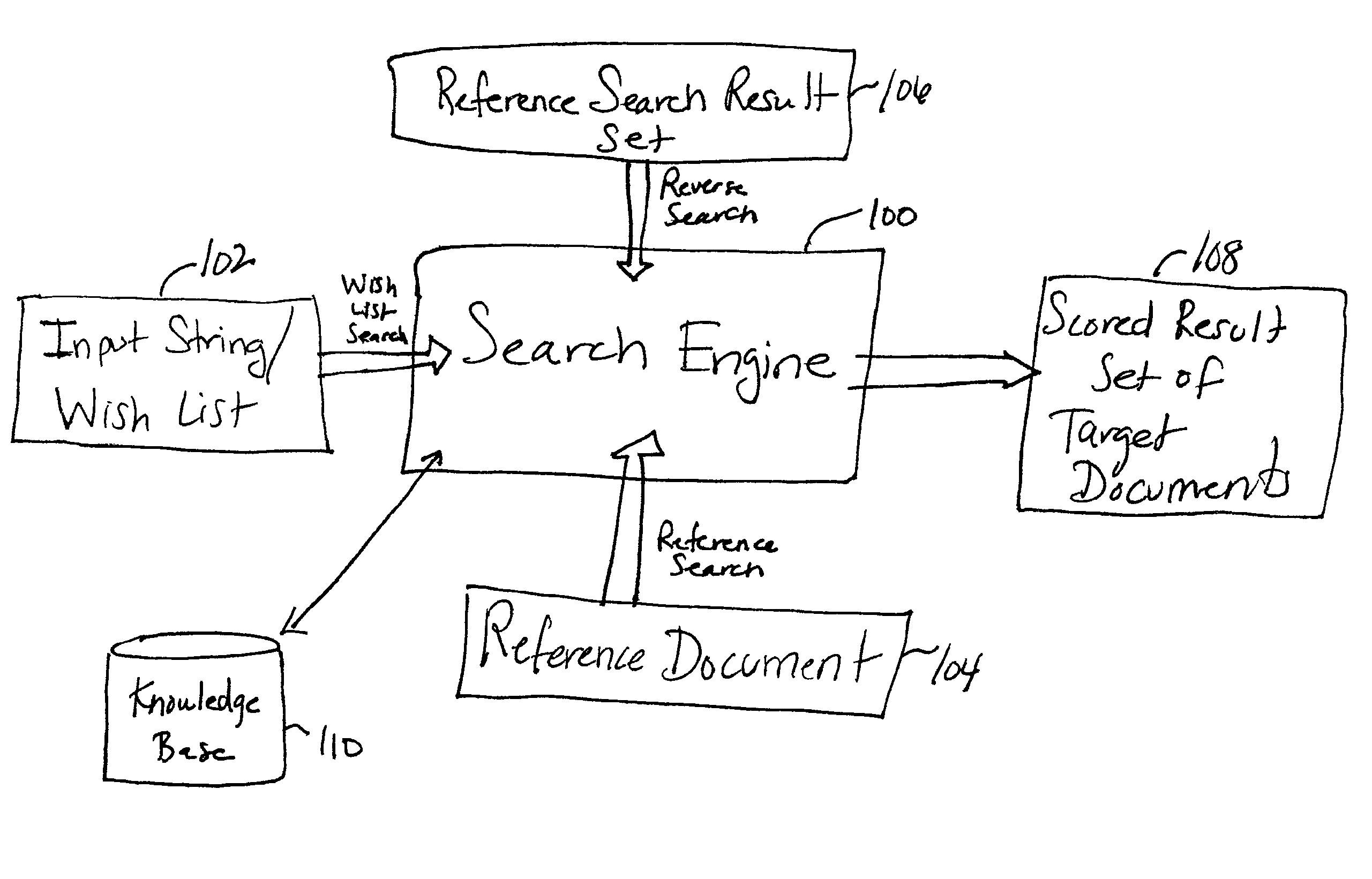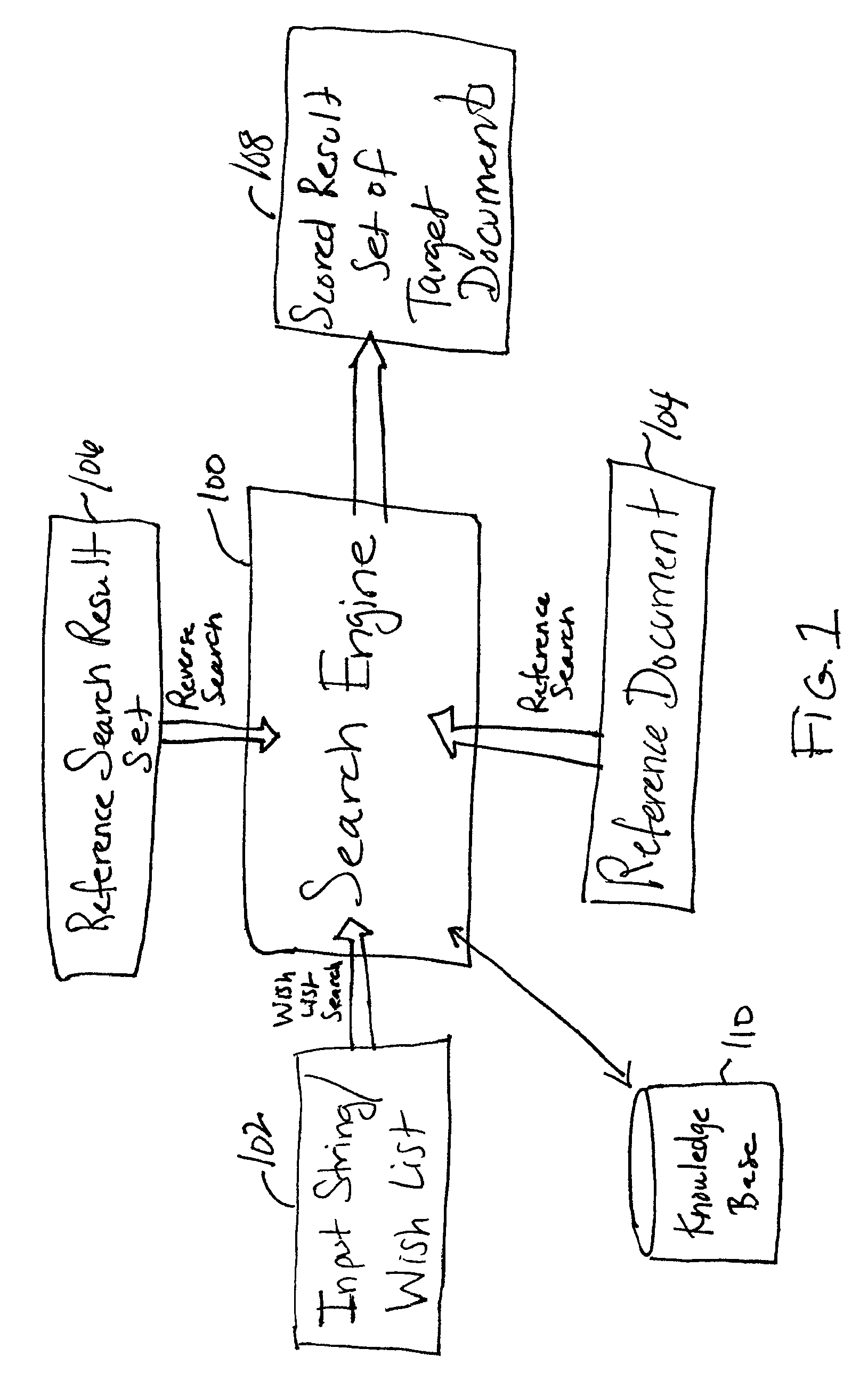Information retrieval systems face several daunting problems with delivering highly relevant and highly inclusive content in response to a user's query.
For example, in conducting a search, the
information retrieval system may have difficulties with synonomy, where different words are used to refer to the same thing (e.g., automobile vs. car) and
polysemy, where there are different meanings for the same word (i.e., “Berkeley” can mean the University of California, Berkeley or the city, Berkeley in California).
MSOffice) in both the search queries entered by a user and in the documents being queried can cause additional problems in the delivery of relevant search results.
Information retrieval systems also have problems with partial matches (i.e., a document may contain “TOYOTA®,” whereas the query might be “TOYOTA TERCEL®”), incomplete queries, complex meanings that extend beyond the words entered in queries, accounting for the
relative significance of a users' query in a document, and the implicit preferences of a user conducting queries that the user did not specify in his query but must be inferred by the information retrieval
system.
However, these all have drawbacks.
Keyword searches and Boolean queries can be very difficult for many users to construct effectively and do not address some of the most basic full-text search problems, including synonymy,
polysemy, spelling errors, abbreviations, concatenations, and partial matches.
However, it is difficult to accurately extract concepts from documents with a high
degree of precision and recall.
There are several algorithms used currently to automatically categorize a document into a taxonomy of concepts, but they commonly have a low degree of accuracy, very poor results, no ability to match an input query of a few words into concepts in the taxonomy, and a significant amount of training is required in order for the classifiers to work properly.
Extracting concepts from text using
natural language parsing (NLP) techniques is another method commonly used, but it is language dependent, it does not work well when there is
ambiguity in the text or if the content does not have any grammatical structure, etc.
While entity extraction using NLP is useful for finding (potentially) new concepts, it is generally not sufficient for finding existing, or known, concepts.
Further, traditional
collaborative filtering engines do not work well when the number of searchable items is increasing and changing constantly, the number of users is much less than the number of items, and very few of the items have been seen and rated in the past.
However, these techniques do not allow a high level of precision in the correlation between concepts, nor do they incorporate human knowledge or allow for human editorial control in the linking between concepts.
In addition, these techniques do not provide mechanisms for combining multiple search results to obtain a set of the most relevant results.
When conducting this type of document to document search, the problems listed above regarding spelling errors, abbreviations, concatenations, etc. are compounded since the
search engine must now be able to deal with potential problems or discrepancies (e.g., spelling errors) in two documents instead of one (i.e., problems in both the document being searched on and the documents being searched for).
However, there are many problems with current techniques for these types of whole document searches.
For example, a job posting for a secretarial position requiring proficiency in using “MS Office” might not be matched with a résumé listing experience in “MSOffice” due to a failure to match these differently-written terms that mean the same thing.
Further, not all words or sections of a document have the same importance, which can greatly affect search results.
However, this technique will not work unless a user conducts enough searches such that a sufficient amount of feedback can be received to allow the learning process to be effective.
In addition, current techniques do not provide an easy way for a user to apply both whole document searches and search queries involving key words to obtain even more targeted search results.
Thus, current techniques for similar document searching have a number of deficiencies that can greatly affect the relevance of the search results obtained and effectiveness of the search.
 Login to view more
Login to view more  Login to view more
Login to view more 


